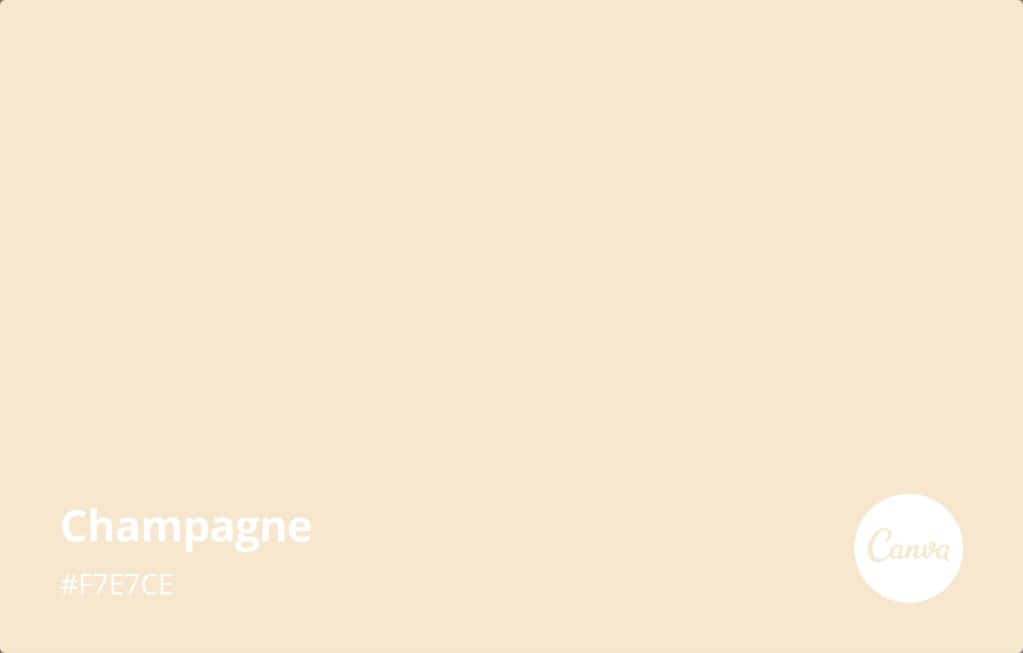Champagne is a sparkling white wine that originates from the Champagne region of France. It is made from a blend of Pinot Noir, Pinot Meunier and Chardonnay grapes. Champagne ranges in color from pale straw to golden yellow. Brown is a color that can range from beige to almost black. At first glance, champagne and brown may not seem very similar. However, when examining the colors closely, there are some champagne shades that are close to lighter brown tones.
The Color Spectrum of Champagne
The color of champagne depends on several factors:
- Grape variety – Chardonnay produces lighter and more yellow champagnes while Pinot Noir makes them deeper gold.
- Blending – How the different grapes are blended affects the final color.
- Production method – How long the wine spends fermenting and aging impacts the depth of color.
- Dosage – The amount of added sugar at the end can lighten the color.
This results in a wide spectrum of potential champagne shades:
| Champagne Color | Description |
|---|---|
| Very Pale Straw | Nearly clear with just a hint of yellow, like a wheat field. |
| Pale Straw | Light golden yellow, similar to straw. |
| Light Gold | Warm golden tone, like hay. |
| Gold | Richer golden color, reminiscent of honey. |
| Deep Gold | Intense yellow gold verging toward amber. |
As you can see, champagne covers the spectrum from very pale to deep golden hues. But could any be considered close to brown?
The Color Range of Brown
Like champagne, brown is not just one shade. It encompasses a variety of hues including:
- Light brown – Ranging from beige to tan.
- Medium brown – Moving toward a chocolate tone.
- Dark brown – Espresso or coffee-like.
- Reddish brown – Infused with auburn tints.
Lighter brown shades begin to verge into golden and amber territories. It is among these lighter browns that we may find some similarities with champagne.
Comparing Champagne and Light Brown
Now let’s directly compare some of the lighter brown shades to champagne hues:
| Light Brown Colors | Closest Champagne Matches |
|---|---|
| Beige | Very Pale Straw |
| Golden brown | Light Gold |
| Bronze | Deep Gold |
| Tan | Gold |
The lightest champagnes like very pale straw and light gold come closest to pale browns like beige and tan. As the brown and champagne colors deepen, there is some overlap in tones reminiscent of bronze. But once the browns start moving into medium to dark shades, there is no champagne equivalent.
Key Differences Between Brown and Champagne
While light browns and champagnes intersect at their lightest spectrums, there are still some key differences:
- Champagnes have more vibrancy and luminosity even when pale. Browns appear more muted and earthy.
- Champagne maintains a distinct yellow undertone whereas brown shifts into more reddish undertones.
- When viewed next to each other, even lighter browns still appear darker than champagnes.
- As they deepen in color, champagnes continue looking warm and golden while browns take on a cooler, darker charcoal tone.
So while the palest champagnes and lightest browns may initially seem similar, direct comparison shows champagne maintaining its bright, floral yellow notes while brown evolves into something more neutral and subdued.
Special Case of Rosé Champagne
We’ve focused on traditional golden champagnes thus far. But rosé champagne provides an interesting exception. Rosés are produced by leaving the skins of black Pinot Noir grapes in contact with the juice for a short time, imparting a pinkish hue. These rosy tones blend into light shades of copper and salmon, overlapping with the light reddish brown family. A rosé champagne with a strong copper color could be comparable to a light brown. But traditional golden champagnes veer away from brown as they deepen.
Conclusion
To summarize, there are some shades of champagne, particularly very pale and light gold styles, that enter the color spectrum of lighter browns like beige and tan. Both display similar light golden hues. However, they still differ in terms of vibrancy, undertones and how they evolve into deeper shades. The exception is a light coppery rosé champagne, which can closely resemble light reddish browns. But for the most part, as the colors deepen, champagne maintains a bright, warm golden hue while brown takes on muted, neutral earthiness. So while they occupy the same light color range, comparisons show champagne’s glowing luminosity keeps it distinct from brown’s subdued neutrals.


